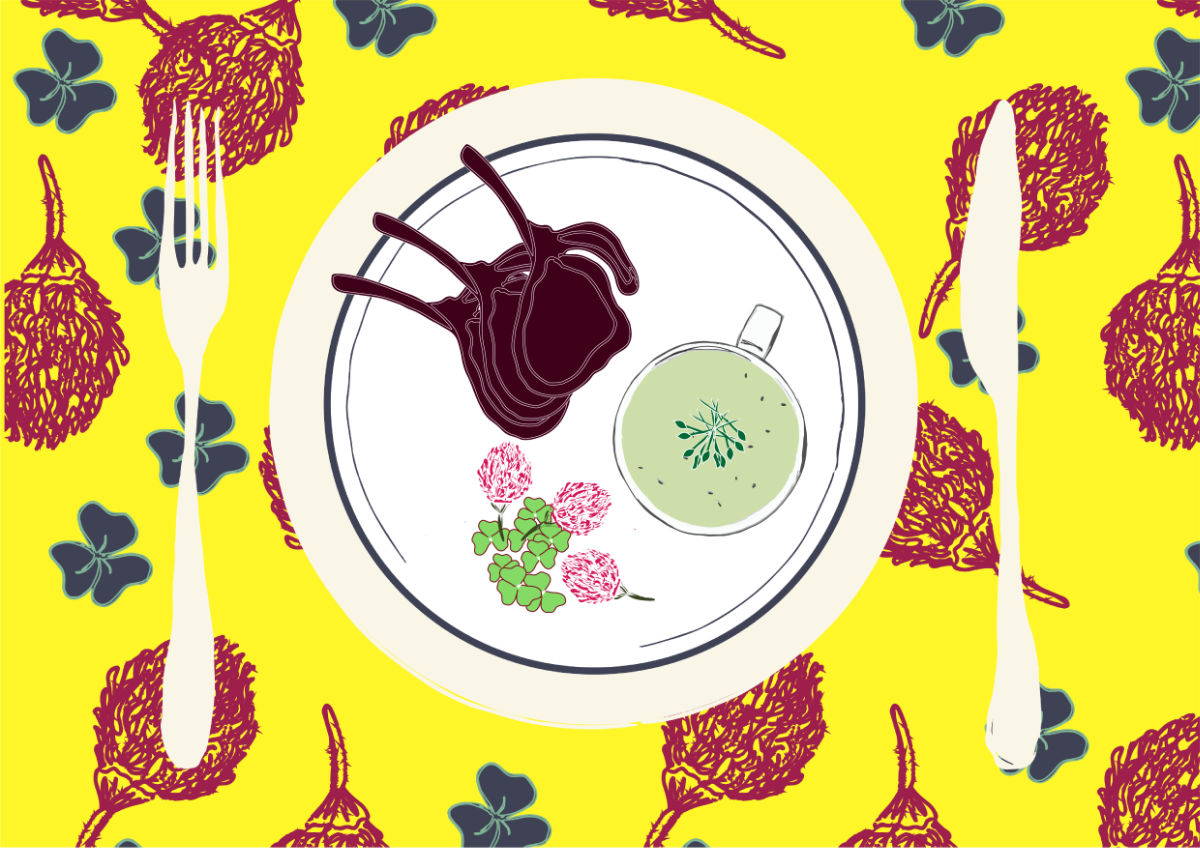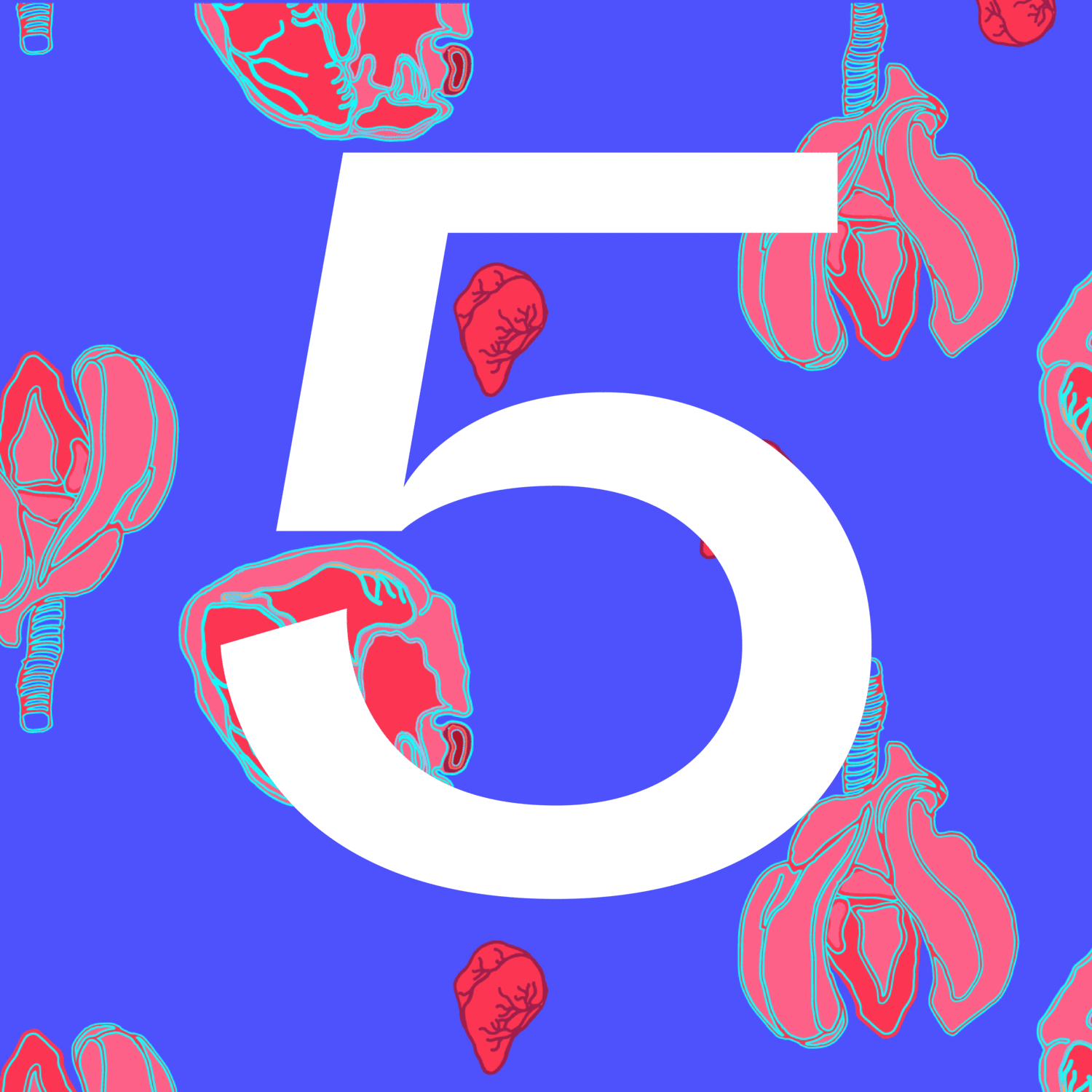Brexit Banquet
Research project and eat along. Hosted by MU Eindhoven as part of The Center for Genomic Gastronomy’s O.F.F.I.C.E installation at EVOLUTIONARIES. [2020 – 2021]. I received the brief from The Center of Genomic Gastronomy back in 2019 to explore a set of transition scenarios for pre-enacting a disrupted food system post Brexit. I was head researcher. From my research I created 5 dishes, their stories and illustrations.
The U.K.’s exit from the E.U. is already impacting local and global flows of ingredients – transforming how food is produced, consumed and traded. Brexit Banquet is a tool for tasting and evaluating a range of outcomes when every aspect of food culture will need to be reconsidered.
How can farmers, chefs, policy-makers and eaters acclimate to changing realities, flavours and new culinary landscapes?
Fish in Chicks: New Needs, New Breeds.
Eaters in the UK enjoy many staple foods that aren’t actually grown there. For example, chickpea, the versatile pulse used in hummus, vegan sweets, stews (and more) is usually imported from Asian countries. Likewise, the potatoes used for chips, though available locally, are often bought pre-cut and frozen from the EU.
As these products could become more difficult or expensive to import in a post-Brexit UK, it may stimulate the production of new local crops or the substitution of certain staples. In Norfolk, experiments in breeding and growing lentils, chia seeds and chickpeas for regional soils and climate zones has already begun.
This dish imagines an adventurous remix of the classic Fish & Chips. Could British-grown chickpeas replace wheat flour in chip shop batter, while the chips themselves are replaced by a side of local lentils and rediscovered seaweeds?
Lamb and 4 Clover: Lamb for breakfast, lamb for lunch, lamb for tea.
In a post Brexit no deal scenario, the UK might lose its primary lamb customer: the EU. In 2019, over 90% of total UK sheep meat was exported to Europe. In Fact, it was speculated that in the event of a no-deal Brexit, Boris Johnson would buy almost the entirety of Wales’s slaughtered lambs (£500m worth) in an attempt to appease rural farmers if they faced expensive new tariffs. Bucket of fried lamb anyone?
With various bleak claims about the number of harvests left in UK soils being currently debated, it is clear that soils are rapidly deteriorating. The effects of industrialized farming focused on cost-effective production rather than investment in natural capital and long term soil health have taken their toll. Clover and other ley pastures such as chicory, ribgrass and legumes that improve soil structure are increasingly grown up and down the country in Biodynamic farms for livestock to graze on.
This dish offers a way to eat through £500 m pounds of lamb while supporting new farming techniques that regenerate UK ecosystems, much needed for an independent Britain.
Chlorination Chicken: How the US cleans up.
In a post-Brexit UK, could lower food standards allow for cheaper animal products from the US to flood British supermarket shelves? Will eaters choose price over quality?
The EU to upholds a standard of food quality, food safety, and animal welfare, unmet by trading partners like the US, where hyper-industrial food processes, like hormone-fed beef or chlorine-washed chicken, are allowed.
Could the UK’s “Coronation chicken”, made popular in the 1950s by Queen Elizabeth II “symbolizing the expansive taste of the British empire” evolve into “Chlorination chicken”: a new sign of the UK’s international relationships?
For now it seems that Farm to Fork, safety first and animal welfare in agriculture have prevailed over cheap, US alternatives. This dish, however, documents the debate and concerns of a future where the prospect of Chlorination chicken was very much on the table.
No Fish No Chips : What’s the catch?
With cod prices rising and most potatoes for chips coming frozen from the EU will the traditional fish and chips become a new luxury?
The UK imports most of what it eats, and exports most of what it catches. As one of the UK’s top 5 imported fish, cod has long been the star of the traditional fish and chips. Could changing prices and flows inspire local chip shops and pub kitchens to accommodate the local catch?
Blue whiting, herring and sandeels have been speculated by some to be amongst the influx of species to be caught in UK waters by UK boats post-Brexit. Sandeels are said to have become the largest single-species fishery in the North sea, with the vast majority of UK sandeel being landed in Denmark for processing into fish meal. As a hugely important part of the marine ecosystem and major target of the fishing industry, fishing sandeel has previously been banned off the east coast of Scotland and north-east England to protect the food supply of fish and sea bird colonies. (Additional link). Will the UK set out to protect depleted sandeel stocks, or might the UK develop the policy, market and large-scale industry to catch and process sandeels on a globally competitive level?
What will the new Fish & Chip experience be with no (cod)fish and no chips? This dish deals with tensions between conservation, trade, industry, and nostalgia, experimenting with potentially low-cost local sandeels with a side of salty sea greens. Can the traditional chippy thrive even if the classic ingredients change?
Deep Fried Lights: An offal tale.
Offal, dark meats, odd cuts and organs are enjoyed in various dishes in continental Europe, but apart from the famous Scottish Haggis, they are rarely consumed in the UK. Brexit trade deals may make it harder for the British livestock industry to sell these typically exported cuts of meat to the EU (pg 116), leaving the UK with a surplus of organs. Will it be necessary to incentivize local sales, as well as new offal recipes?
This dish is an internationally inspired nose-to-tail meal kit. Using new farm box schemes and direct-to-consumer online food platforms, eaters can order the exact products they want for easy pick-up. Farmers can minimise waste, interface with customers encouraging the sale (pg12), cooking, and consumption of little known cuts. In this case: beef lungs. Inspired by the Malaysian street food ‘Paru Goreng’, these beef lungs (aka lights) are coated in flour and turmeric powder, deep fried, then served up with vinegar and hot sauce, giving a bit of excitement to these typically exported, excess organs.





